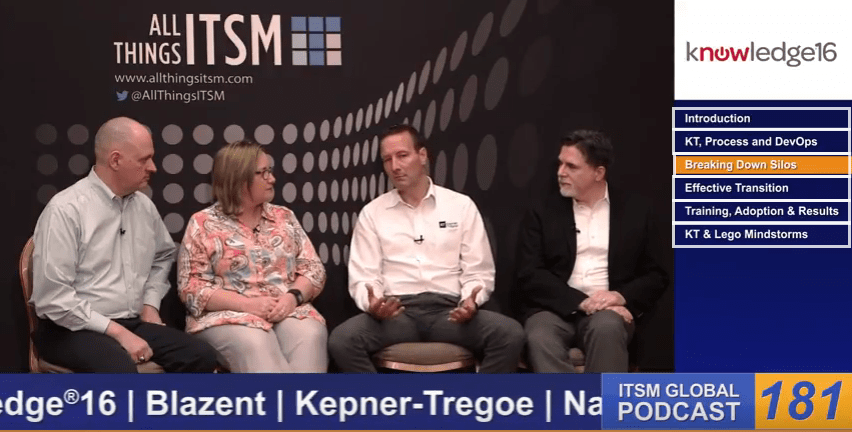Ultimately, the goal of the best IT service and support organizations is to meet or exceed customer expectations in a stable IT environment. Despite the constraints of time and budget, the best organizations focus on the customer experience and productivity with a holistic approach to driving IT stability. In our work with global service and support organizations, the best results are achieved when real changes are made to how organizations gain, retain and share knowledge to resolve complex issues across the support process. This means an end-to-end integration of all the disciplines.
The advantages are clear:
- Reduced mean-time-to-resolution
- Improved first-time-fix rate
- Reduced back log
- Streamlined
- Accelerated productivity of new
- Reduced incident
- Enhanced customer experience
Pull These Three Levers to Improve IT Stability
Technical expertise is expensive and often fleeting, creating huge gaps in capability and knowledge within a complex, global, rapidly changing environment. Within this challenging landscape, there are three levers that IT organizations can pull to improve stability. The best organizations choose to address all three, finding that an integrated approach yields better, more sustainable results.
Lever One: Front Line and Incident Management
Customers want a personalized, consistent experience when they have an issue. Customers initiate the support process with self-service in accessing a knowledge base or by requesting service from the front-line team. Improving these interactions and results has an immediate and profound effect on customer satisfaction. In addition improving the interaction between the knowledge base and the support team improves the ability of both to address customer concerns.
Lever Two: Service Management Enterprises (SMEs) & Problem Management
Properly organizing and automating support tasks to track, measure and process incidents and their transition to Problem Management is critical to driving stability, building the knowledge base and controlling how work is done. Managing problems effectively with robust root cause analyses moves beyond managing incidents to resolve repeat issues, manage risk and document root cause in post mortems. Improvements can dramatically affect customer satisfaction, build the knowledge base and control costs.
Lever Three: Continuous Improvement
Executing actions to prevent and reduce future issues, outages, questions, or challenges builds ongoing success and structural stability. Here, key parts of the IT infrastructure get high-level attention by building a risk plan into a solution. It is at this point that important solutions are broken down into actions that are implemented, working with development, change management and project teams. Monitoring and reporting improvements is key to sustaining past improvements and building a culture of continuous improvement.
A holistic approach that focuses on all three levers improves the effectiveness of the entire organization. For example, a typical gap in IM is in the language used to describe an incident. Bringing consistency here not only can improve incident and knowledge management, it is essential to effective investigations and problem management (Lever Two) and developing and implementing effective solutions (Lever Three). Or consider what happens during Problem Management (Lever Two) if what is learned in root cause analysis is not leveraged (Lever Three) to identify similar stability problems or other opportunities for continuous improvement.
The best IT service and support organizations have invested resources to optimize how they use people, processes, technology and business management across these 3 areas with an integrated, end-to-end approach. By thinking and acting holistically they look beyond incremental improvements to achieving stability and customer satisfaction.









